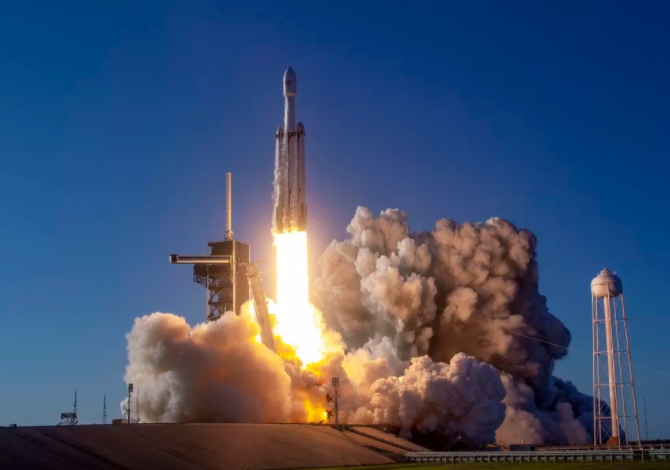SpaceX Falcon Heavy picked to deliver lunar rover to moon’s south pole

The same setup that sent Elon Musk’s Tesla toward Mars has a new job, this time for NASA.
A SpaceX Falcon Heavy rocket will take on its most dramatic mission yet when it launches a lunar lander to the moon in 2023.
Pittsburgh-based space robotics startup Astrobotic announced Tuesday it had selected Elon Musk’s rocket-launching company to boost its Griffin lander, which will carry NASA’s water-hunting Volatiles Investigating Polar Exploration Rover (Viper) toward the lunar south pole.
Falcon Heavy is currently the most powerful SpaceX rocket. It’s basically just three of the company’s workhorse Falcon 9 rockets strapped together, but the configuration has only flown three times, most recently in June of 2019.
Falcon Heavy is probably best known for its debut flight that sent Elon Musk’s red Tesla on its way to the red planet. SpaceX plans to use its next-generation Starship for heavy lifting in the future, including to fly a group of space tourists on a trip around the moon, also in 2023.
However, Starship is still in development, and early prototypes have only flown to an altitude of 6 miles (10 kilometers) and have yet to stick the landing.
“Falcon Heavy completes our Griffin Mission 1 (GM1) solution by providing a proven launch vehicle to carry us on our trajectory to the Moon. SpaceX has the team, vehicle and facilities to make this happen,” Astrobotic mission director Daniel Gillies said in a statement.
The key word there is “proven,” meaning that unlike Starship, Falcon Heavy has already managed to deliver payloads to space.
After Falcon Heavy lifts Griffin beyond Earth’s gravity well and places it on a trajectory to the moon, the lander will set down on the lunar surface and allow Viper to roll down ramps and on to the regolith where it will probe for water ice on the surface and below.
“Gaining a better learning of resources on the moon is critical to advancing humanity’s reach beyond Earth,” said Stephanie Bednarek, SpaceX senior director of commercial sales.
Astrobotic was initially spun out of Carnegie Mellon University and was a competitor in the Google Lunar XPrize at one point.
The mission is part of NASA’s Commercial Lunar Payload Services (CLPS) program. Astrobotic is also slated to send its smaller Peregrine lander to the near side of the moon later this year under the CLPS banner. That craft is set to fly on the maiden voyage of the United Launch Alliance Vulcan Centaur rocket.
Both lunar landers will launch from Florida’s Cape Canaveral.



 Creators of mankind
Creators of mankind Description of “Tall white aliens”
Description of “Tall white aliens” Where they came from?
Where they came from? About hostile civilizations
About hostile civilizations The war for the Earth
The war for the Earth “Tall white aliens” about eternal life
“Tall white aliens” about eternal life Video: “Nordic aliens”
Video: “Nordic aliens” Aliens
Aliens Alien encounters
Alien encounters The aliens base
The aliens base UFO
UFO Technology UFO
Technology UFO Underground civilization
Underground civilization Ancient alien artifacts
Ancient alien artifacts Military and UFO
Military and UFO Mysteries and hypotheses
Mysteries and hypotheses Scientific facts
Scientific facts


















